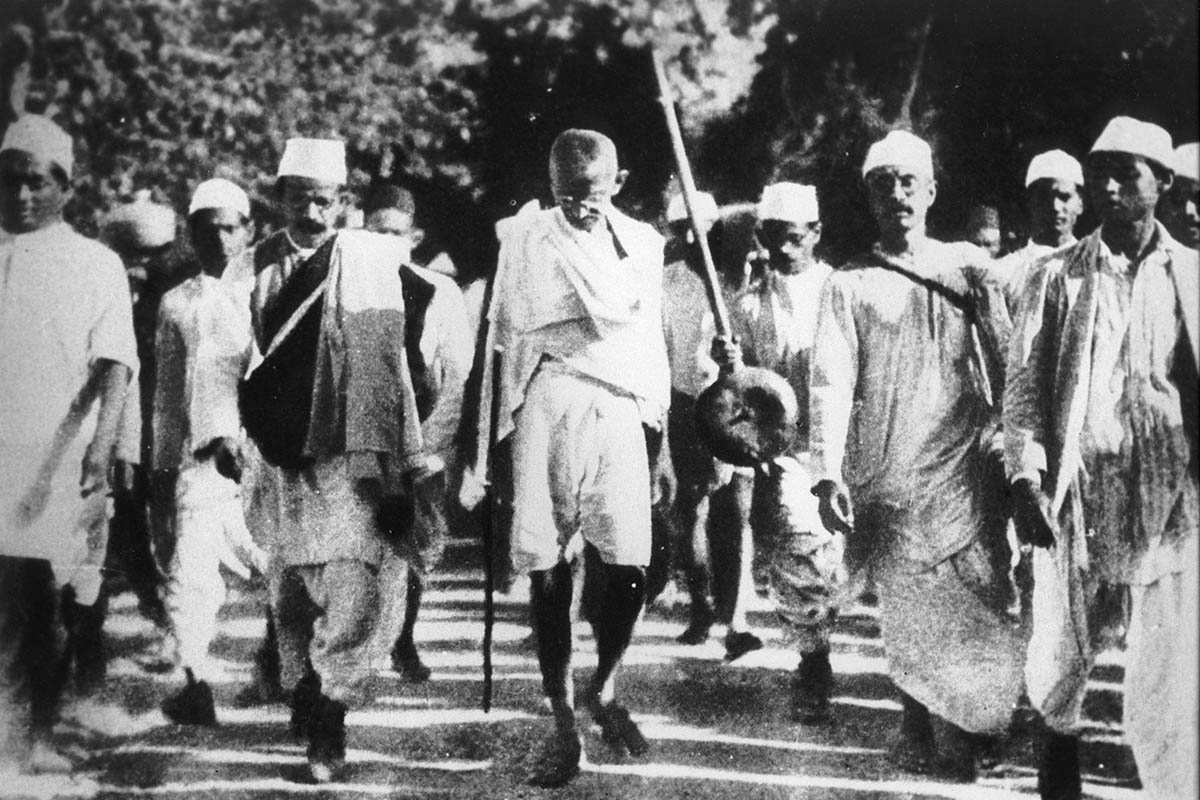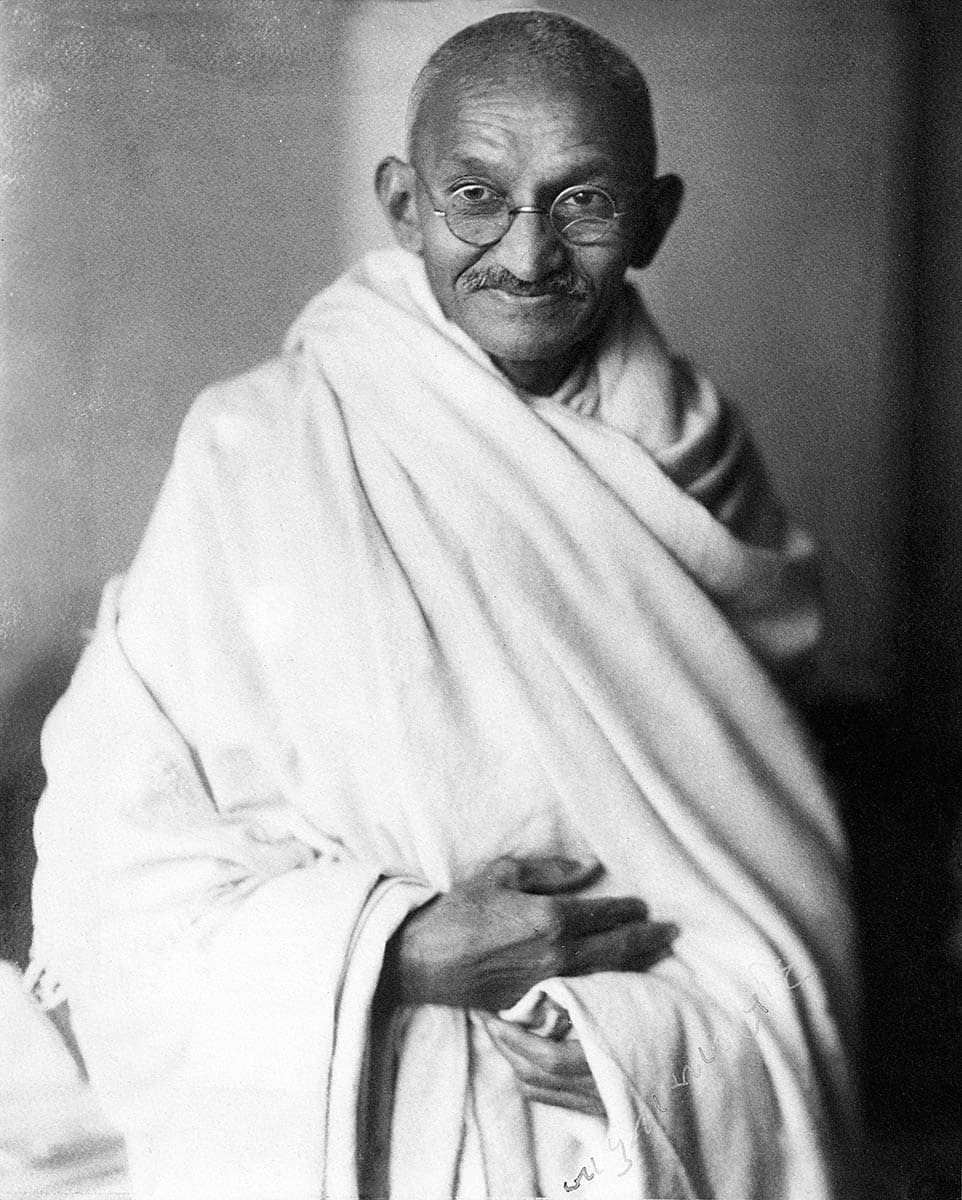
Mahatma Gandhi was a remarkable man. He led a mass movement of Indians to freedom and helped bring down a mighty empire. A self-declared “non-violent revolutionary”, Gandhi was a master of political strategy. Yet, his politics and philosophy were not without their contradictions.
Gandhi was a complex and contradictory character. His relationship with India’s Untouchables was riddled with paradoxes, he was a misogynist and he held undeniably racist views. In light of his views on caste, women, and race, was Gandhi a complex yet flawed hero, or an indefensible villain?
Mahatma Gandhi Fought the British Empire and Won

Mahatma Gandhi’s political story began when he was working as a young lawyer in South Africa. The racial discrimination he and his fellow Indians faced, spurred him into political action. His rise to prominence in South African Indian politics was rapid and his achievements impressive. Gandhi brought his method of “Satyagraha” to India in 1915.
Gandhi developed the concept of Satyagraha, which means “holding onto truth”, to express the practice of fearlessly, but non-violently, engaging in civil resistance. Even as a young man, Gandhi had a remarkable aptitude for politics. Armed with his method of Satyagraha, he became a formidable activist and organizer.
Get the latest articles delivered to your inbox
Sign up to our Free Weekly NewsletterOn his return to India in 1915, Gandhi was swiftly elected to the Indian National Congress and went about turning the organization into a mass anti-colonial movement, focusing on the Indian peasantry. Gandhi’s determination and eloquence earned him the name “Mahatma”, meaning “Great Soul” from his followers. He was a master political strategist and crowds of tens of thousands regularly traveled hundreds of miles to his mass rallies.
Today, Gandhi is a national hero and India’s most famous freedom fighter. Globally respected for his fight against the evils of caste and religious violence, for most Indians his worldwide reputation is a source of great pride. Gandhi’s image is all over India, on advertisements, banknotes, and murals. His portrait hangs in public buildings and he features as the face of numerous public campaigns.
It is widely acknowledged that Mahatma Gandhi’s approach to civil disobedience changed the face of political protest forever. Mahatma is celebrated the world over as the man that fearlessly took on the mighty British Empire and won.
Satyagraha

Though Mahatma Gandhi was a tiny, old and frail man, he had an iron will. Satyagraha, Gandhi’s form of non-violent civil disobedience, was his most potent weapon. By the 1930s, Satyagraha was in full swing. Gandhi launched the famous Dandi Satyagraha, or “salt march”, on 12 March 1930. The 1882 Salt Act in British India banned Indians from collecting, producing, or selling salt. Indian citizens thus had to pay the high prices dictated by the colonial authorities, or risk punishment/imprisonment.
The choice of salt was masterful and the effects of the Dandi Satyagraha were felt all over India. Everyone from the peasantry to the Indian nobility understood the importance of salt in everyday life. Thus, in a political masterstroke, Gandhi set out from his Ashram in Sabarmati with 78 satyagrahis on a 241-mile trek to the Arabian Sea. Thousands joined the march, and on 6th April 1930, Gandhi openly defied the law by collecting a small amount of salt in front of a group of journalists assembled at Dandi Beach.
In the end, tens of thousands of Indians joined Gandhi’s lead, and over 60,000 were arrested — including Gandhi himself. This simple, defiant act of civil disobedience, where ordinary people took a stand against a mighty Empire, also worked wonders to raise global awareness of India’s plight. The Dandi Satyagraha shook the foundations of the British Empire and set India on the road to independence in 1947.
Gandhian Satyagraha has shaped movements for freedom around the world. The most famous disciple of Gandhi’s methods was Martin Luther King Jr. Visiting India in 1959, King set out to deepen his understanding of Gandhian principles, declaring that “India is the land where techniques of non-violent social change were developed”. Mahatma Gandhi’s Satyagraha thus changed the face of protest forever.
Gandhi and Caste

Mahatma Gandhi famously set out to champion the cause of India’s Untouchables. Yet, it would be incorrect to call him a hero of the struggle against caste oppression. Untouchability entails the segregation of people considered to be outside of the caste system. The lowest groups in the system, the Untouchables, or Dalits, are forced into jobs seen as ‘polluting’ to upper-caste Hindus, such as manual scavenging (the manual collection and removal of human waste) and clearing away dead animals.
Gandhi explicitly recognized the “calculated degradation” to which upper-caste Hindus had subjected “the depressed classes” for centuries. However, at the same time, he saw the caste system as the divinely mandated social glue of Indian society. For Gandhi, the unity of Hindu society was more important than equality for the Untouchables.
For example, in 1936, he argued that manual scavenging was “a most honorable occupation” and one of many vital services upon which Indian society was sustained. Gandhi suggested that a manual scavenger “does for society what a mother does for her baby — a mother washes her baby of dirt and insures his health”. The job of the scavenger was for Gandhi, to protect and safeguard “the health of the entire community by maintaining sanitation for it”.

At the same time, he was also clear that the duty of the (upper caste) Brahmin was to “look after the sanitation of the soul”. On this logic, Gandhi set out to integrate Untouchables further into the Hindu fold, and at the same time lock the caste system in place.
Gandhi declared himself the leader of the Untouchables, renaming them “Harijans” (“Children of God”). He then commenced a long campaign to open Hindu temples to them (Untouchables were historically banned).
Gandhi wanted greater respect for India’s Untouchables within Hindu Society. However, he wanted to achieve this by “Hinduizing” them and affording them new rights. What he wanted to avoid, was their political awakening. By claiming that Harijans were “sacred” and “pure”, Gandhi could support caste hierarchy and oppose Untouchability without any apparent contradiction.
Gandhi, Women, and Race

Alongside his controversial views on caste, Gandhi’s attitudes and behavior towards women and his views on race were equally problematic. To be sure, Gandhi championed the role of women in the nationalist movement and in public life. However, at the same time, he held severely bigoted and misogynistic views.
Gandhi believed that “menstruation was a manifestation of the distortion of a woman’s soul by her sexuality”. He also wrote about an incident in South Africa where a young man was harassing two of his female followers. Gandhi responded by personally cutting the girl’s hair off to ensure that the “sinner’s eye” was “sterilized”.
For Gandhi, sex should only be part of procreation and women should resist their husband’s advances. While he was in his late 70s, to test his willpower to abstain from sexual desire, he slept naked with his grandniece when she was in her late teens. Like many men in positions of power, Mahatma Gandhi took advantage of his status. It is impossible to defend Gandhi’s imposition on his young followers of “experiments” with sexual self-control.
Gandhi’s views on race are equally difficult to ignore. As a young man in South Africa, he explicitly endorsed the racial hierarchy of the British Empire. In 1903, he wrote that white people should be the “predominant race” and that black people were “troublesome, very dirty, and live like animals”.
As a lawyer and political organizer for Indian rights in South Africa, Gandhi was incensed that Indians were treated little better (if at all) than the “raw” native “savages”. Throughout his stay in South Africa, Gandhi consistently showed his loyalty to the British Empire and his disdain for Africans and their plight.
Mahatma Gandhi: Hero or Villain?

Mahatma Gandhi’s ethics and politics were variable. As he applied himself to set the world to rights — first in South Africa and then in India — he came to believe that his “inner voice” was the voice of God. He believed that his “fitness” (the result of practices of austerity, self-purification, and diet) allowed him to hear his inner voice clearly and reliably. The Mahatma was convinced that it was his destiny to lead a troubled world on the path to salvation (Tidrick, 2006).
Gandhi’s “inner voice” was however unpredictable and contradictory. He could therefore champion women at the same time as treating them with fundamental disrespect. Gandhi could also challenge Untouchability at the same time as reinforcing the caste system.
Despite his conviction that the spiritual wisdom of India had much to teach the world, he supported the colonial suppression of Africans. Gandhi believed that “Kaffirs are as a rule uncivilized”.
Yet through the circulation of his politics, methods, and ideas, Gandhi remains globally relevant. Nonetheless, it is impossible to deny that key aspects of his legacy are deeply problematic.
Mahatma Gandhi is both a hero and a villain. Icon and false idol. What his story tells us above all, is that like many powerful men, he achieved much and lived precisely how he wished.








